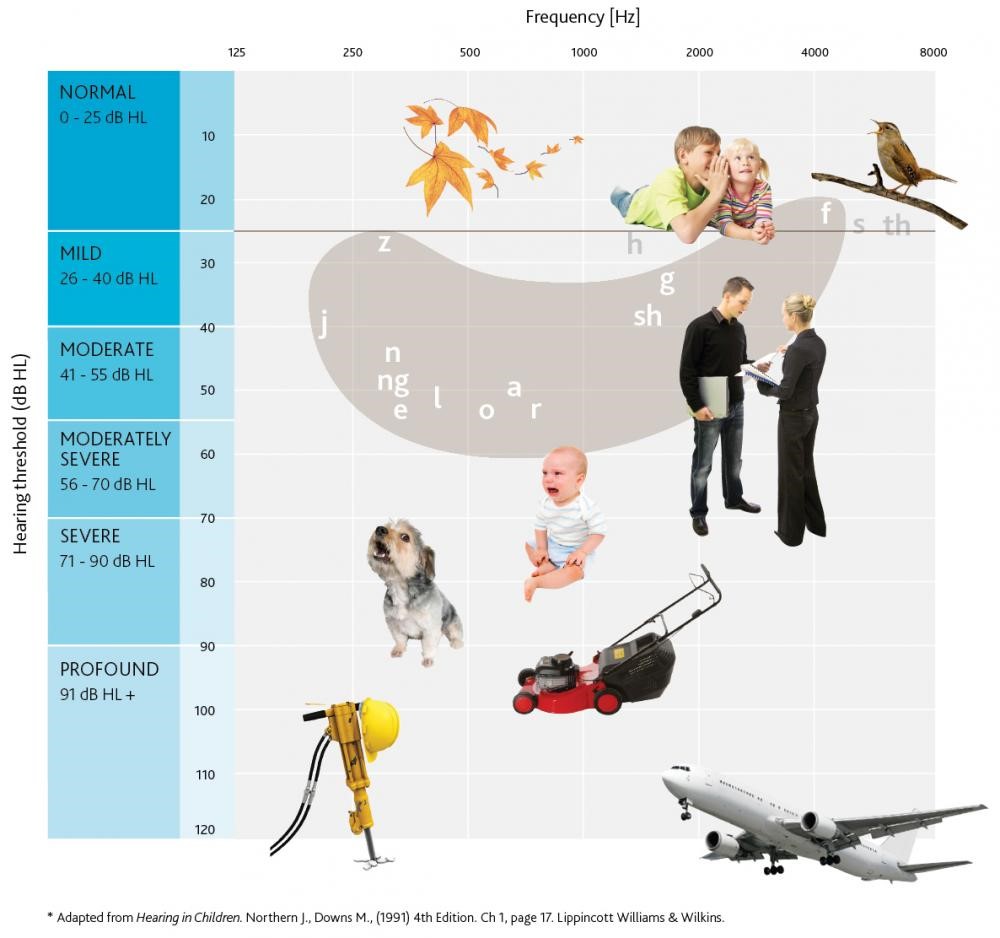Types and causes of hearing loss
Knowing more about the types and causes of hearing loss will help you feel confident to make the right choice for you or your loved one.

What you'll find on this page
- The types and causes of hearing loss.
- Understand your degree of hearing loss.
- Potential treatment options.
Every story about hearing loss is different. Your hearing loss may affect one ear or both, and it may stem from a problem in the inner, middle or outer ear, or from a combination of places.
Knowing what type it is and the cause can be crucial to finding the right solution.
Types of hearing loss
Sensorineural hearing loss occurs when the inner ear (cochlea) or hearing nerve is damaged or does not work properly. With sensorineural hearing loss, sounds are not only softer, but also difficult to understand — especially when it is noisy.
Common causes include:
-
congenital hearing loss
-
ageing
-
exposure to loud noise
-
head injury
-
genetics
-
Ménière's disease
-
adverse reaction to medications.
Treatment options include:
-
hearing aids
High-frequency hearing loss is a type of sensorineural hearing loss where it may be possible to hear some sounds with a lower pitch, but not high-frequency sounds like birds chirping.
Common causes include:
-
congenital hearing loss
-
ageing
-
exposure to loud noise
-
head injury
-
genetics
-
Ménière's disease
-
adverse reaction to medications.
Treatment options include:
-
hearing aids
Sensorineural hearing loss can occur in one or both ears. If the loss is in one ear, it is often referred to as unilateral hearing loss or single-sided deafness. This is when there is little or no hearing in one ear, but normal hearing in the other ear.
Common causes include:
-
viral infections
-
Ménière's disease
-
adverse reaction to medications
-
head or ear injuries
-
many other unknown reasons.
Treatment options include:
-
CROS hearing aids
Conductive hearing loss occurs when damage to the outer ear or middle ear blocks sound vibrations from reaching your inner ear, or cochlea. With this type of hearing loss, ears may feel plugged and speech may sound muffled, especially if there is a lot of background noise.
Common causes include:
- malformations at birth such as Microtia and Atresia
-
syndromes such as Down, Goldenhar and Treacher Collins
-
chronic mastoiditis or middle ear infections
-
skin growth or cyst (cholesteatoma)
-
draining ears
-
chronic ear infections
-
previous ear surgeries
-
benign tumors.
Treatment options include:
-
medication
-
surgery
-
hearing aids
Mixed hearing loss refers to a combination of conductive and sensorineural hearing loss. This means there may be damage in both the outer or middle ear and the inner ear.
Common causes include any of the causes of conductive hearing loss plus any of the causes of sensorineural hearing loss.
Treatment options include:
-
medication
-
surgery
-
hearing aids
Degrees of hearing loss
Understanding your degree of hearing loss is essential to identifying the right treatment.
For example, hearing aids may be right for someone with mild to moderate hearing loss, while hearing implants may be better for someone with moderate to profound hearing loss.
Look at the audiogram below. You’ll see where sounds fall in loudness and frequency scales to help you understand what you may not be able to hear.
Mild hearing loss
You may hear speech, but soft sounds are hard to hear, such as whispers or the consonants on the end of words like 'shoes' or 'fish'.
Moderate hearing loss
You may hear another person speaking at a normal level, but have difficulty understanding what he or she is saying. You might hear the vowels within a sentence, but not hear the consonants. This makes comprehending a sentence almost impossible.
Severe hearing loss
You may hear little to no speech of a person talking at a normal level and only some loud sounds. Very loud sounds, such as a car horn, wouldn't startle you the same way as it would to a person with normal hearing.
Profound hearing loss
You don't hear any speech — only very loud sounds — and you feel the vibrations of only the loudest of sounds.
Understanding the audiogram
Your audiologist will map your type and degree of hearing loss on a chart called an audiogram. Here's what it looks like and what it can tell you.
Find a hearing specialist near you
Disclaimer
Please seek advice from your health professional about treatments for hearing loss. Outcomes may vary, and your health professional will advise you about the factors which could affect your outcome. Always follow the directions for use. Not all products are available in all countries. Please contact your local Cochlear representative for product information.
For a full list of Cochlear’s trademarks, please visit our Terms of Use page.
In Australia, Cochlear™ Nucleus® implant systems are intended for the treatment of moderately severe to profound hearing loss.
In Australia, Baha® bone conduction implant systems are intended for the treatment of moderate to profound hearing loss.
In Australia, the Cochlear™ Osia® System is indicated for patients with conductive, mixed hearing loss and single-sided sensorineural deafness (SSD) aged 10 years and above with up to 55 decibels sensorineural hearing loss. Patients should have sufficient bone quality and quantity to support successful implant placement. Surgery is required to use this product. Any surgical procedure carries risk.
For Cochlear™ Nucleus®, Osia® and Baha® systems: This product is not available for purchase by the general public. For information on funding and reimbursement please contact your health care professional.
Any testimonial featured on this website is intended for an Australian audience only.






